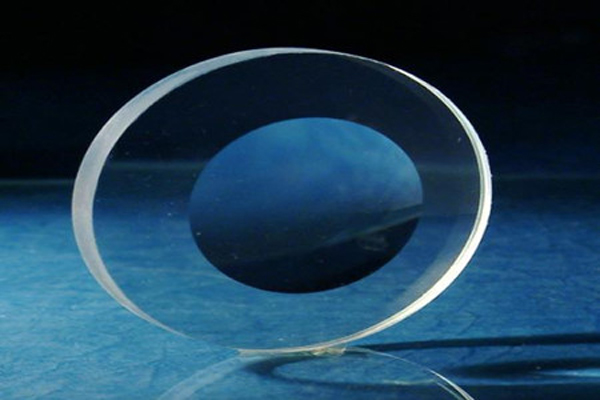HC Plastics News: Industrial waste gas, as an emission in the process of industrialization, has always had a major impact on the natural environment and human health. Solving the problem of industrial waste gas emissions has been a problem that humans have been studying for many years.
Recently, the problem of industrial waste gas has once again been cracked by scientists. Through a characteristic copolymerization reaction, the exhaust carbon oxysulfide becomes a special solid material, and this transparent material can be used in the future to synthesize raw materials for manufacturing resin lenses and optical fibers.

Industrial waste gas "incarnation" high-grade resin lens
This new technology was developed by Professor Zhang Xinghong from the Polymer Science Department of Zhejiang University, and the relevant research results were published in Nature Communication.
In the eyes of chemical workers, the recovery and utilization of carbon oxysulfide has great social and economic significance for China's large coal and oil consumption countries.
Abominable carbon oxysulfide
Carbon oxysulfide is a banned exhaust gas produced in coal, oil refining and chemical processes. It is said to be exhaust gas, because it has always been harmful to the natural environment and health.
Carbon oxysulfide can severely corrode the production equipment, and when the exhaust gas is dissipated into the sky, sulfur dioxide is also generated to cause acid rain. Acid rain will lead to acidification of the land, affecting plant growth and development, corrosion of urban buildings, and increased human diseases.
In addition, carbon oxysulfide is also photooxidized to destroy the ozone layer.
In addition to being produced in the industry, carbon oxysulfide is often found inside and outside the home. The smell of the water in the following waterways and the smell of broken food in the refrigerator are the smell of carbon oxysulfide.
Humans have always been committed to the disposal of industrial waste gas such as carbon oxysulfide. The common way is to reduce emissions. This approach is to reduce production capacity or increase huge waste gas treatment inputs, such as desulfurization.
Desulfurization treatment is one of the more mainstream methods at present, but after desulfurization, how to deal with these removed sulfur-containing substances is still a difficult problem in front of human beings.
The magic of turning waste into treasure
Zhang Xinghong, who has been studying polymer materials for more than a decade, began to think and study. Their research goal is to find the most effective and specific catalytic system to fix gaseous carbon oxysulfide.
After 10 years of research, Zhang Xinghong successfully recycled carbon oxysulfide into a polymer material.
In the laboratory of Zhang Xinghong's research group, the reporter saw that carbon oxysulfide and epoxy compounds, a common and cheap chemical raw material, and catalysts were placed together in an autoclave, and the two could be polymerized into one without A new substance that is poisonous, colorless and transparent.
"The sulphur-containing polymer material thus obtained is half of the weight derived from carbon oxysulfide, and has high recycling efficiency." Zhang Xinghong introduced that the material obtained by the polymerization reaction has a high refractive index and Abbe number, and is an ideal optical resin.
The refractive index and Abbe number are two indicators that we usually encounter in optical shops. The same degree, the lens with high refractive index is light and thin, and will not become "beer bottom". Aberdeen lenses have a more accurate reflection of the world's colors.
Zhang Xinghong said that the optical resin synthesized from sulfur-containing exhaust gas has good processing performance and can be easily used to manufacture lenses and optical fibers.
Metal-free catalyst
The reason why the carbon oxysulfide can be changed into a material for resin glasses is a catalyst.
Finding the right catalyst is a huge challenge in this kind of research. Zhang Xinghong is fortunate to have successfully discovered this catalyst.
“At room temperature, carbon oxysulfide cannot be self-polymerized. We have already realized the copolymerization of carbon oxysulfide and epoxy compounds in the early stage, and effectively converted it into materials. But we use metal catalysts, and the biggest demand is in materials. Can not contain heavy metals." Zhang Xinghong said.
Zhang Xinghong team further researched non-metallic catalysts, combining two kinds of small organic molecules containing nitrogen to form a simple, cheap and effective catalytic system.
Zinc carbite has been widely used in the early life of the earth, and it plays an important role in regulating the body's acidity and alkalinity and maintaining life. In nature, carbonic acid zincase captures carbon oxysulfide and converts it to hydrogen sulfide.
Zhang Xinghong team deeply studied the mechanism of carbonic acid zinc enzyme to activate carbon oxysulfide efficiently, and based on its function and structure, finally found a non-metallic catalyst and successfully converted carbon oxysulfide into a useful material.
The new catalytic system is simple, inexpensive, and has good effects. In particular, the catalyst does not contain metal, so that the obtained sulfur-containing polymer exhibits an original colorless and transparent quality.
"At present, the preparation of sulfur-containing polymers is made of highly toxic phosgene and mercaptan, which are difficult to store and transport. The new method proposed by us has brought about a breakthrough in exploring non-phosgene routes." Zhang Xinghong said that the industry of this research results Promising prospects. 
Editor in charge: Zhang Lan
Iron 3 Oxide,Iron Lll Oxide,Ferric Oxide Red,Transparent Iron Oxide
TINOX CHEMIE GMBH , https://www.tinoxglobal.com